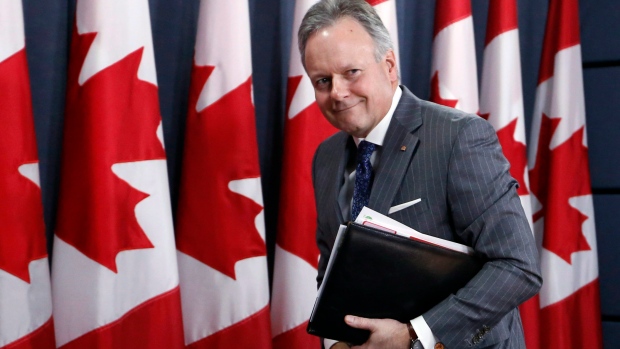Jun 13, 2017
Rate cuts have largely done their work: Poloz
Reuters

Interest rate cuts instituted in 2015 have largely done their job as the Canadian economy gathers momentum, the Bank of Canada's head said on Tuesday, the second top official in as many days to set the stage for rate hikes.
Bank of Canada Governor Stephen Poloz said in an interview with CBC Radio that the economic recovery from weak oil prices appeared to be widening.
"What that suggests to us is that the interest rate cuts we put in place in 2015 have largely done their work," Poloz said. "So that's very reassuring, we're encouraged by the data."
At 12:02 p.m. ET, the Canadian dollar was trading at 75.59 U.S. cents, up 0.7 per cent. The currency's weakest level was $1.3325, while it touched its strongest since April 13 at $1.3226.
Poloz's comments echoed a more hawkish tone from Senior Deputy Governor Carolyn Wilkins on Monday, though he stopped short of suggesting a near-term rate move, economists said.
"It's coming from the upper echelons at the Bank of Canada so I think it's a pretty strong signal," said Nick Exarhos, economist at CIBC.
With gains in employment and solid first-quarter growth, it is reasonable for the central bank to begin laying the groundwork for considering rate hikes by the end of the year or the beginning of 2018, said Exarhos. He expects the bank to hike twice in the first half of 2018.
It would be the bank's first hike since 2010. The bank held its overnight rate steady for five years before cutting it twice in 2015 to the current level of 0.50 percent.
The change in tone from policymakers this week has prompted traders to raise their bets on rate hikes this year, with markets pricing in a 72.3 percent chance of an increase by December. The Canadian dollar added to strength against the greenback on Poloz's comments.
The bank makes its next interest rate decision on July 12, but markets see just 21.5-percent odds of a hike that soon.
Poloz noted a stronger export picture remained a big missing element and suggests there are competitiveness challenges for Canadian companies.
A second missing element is business investment, which has been slow, though there are signs it is picking up, he said.
"It isn't time to throw a party," Poloz added.
Wilkins said on Monday the central bank would assess whether it needs to keep interest rates at near-record lows as the economy continues to grow.
The bank last moved on rates in 2015 as tumbling oil prices put the economy in a brief recession. It has stood pat since.

